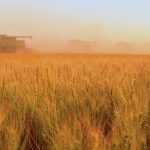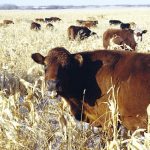Currently, United States President-elect Donald Trump is more of an influence on Western Canadian feed grain prices than a weaker Canadian dollar said Brandon Motz of CorNine Commodities in Lacombe, Alta.


Weaker Canadian dollar less of an influence


Total exports through October up more than 18 per cent



News Roundup from the December 2024 issue of Canadian Cattlemen

Research on the Record with Reynold Bergen


Bumps up wheat estimate, trims barley outlook
